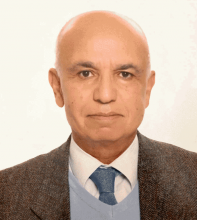You are here
Isn’t it about urbanisation?
Feb 22,2018 - Last updated at Feb 22,2018
A lot of people feel that several problems in our major cities are on the increase, in some spheres radically so.
There is an increase not only in traffic accidents, for example, but also on what one may call traffic "violence".
The same can be said about a host of other forms of violence and problems, like theft incidents of all sorts — including the emergence now of bank thefts — drug use and trafficking, abuse of the environment, bullying, divorce rate, murder and the emergence of gangsters and mafia-like types, etc.
And there is, of course, the increase in unemployment and poverty.
The causes for these and other problems are, I am sure, multiple, including faults in upbringing, education, awareness campaigns, law enforcement, etc. This is in addition to the influx of refugees and asylum seekers in huge numbers, as well as the chaos and lawlessness that came with the "Arab spring".
Isn't urbanisation, however, a culprit?
A quick look at our major cities in the past two decades alone shows that they have largely, perhaps dramatically, increased and expanded; population-wise and area-wise. Overall, the expansion and increase have been both abrupt and chaotic; which makes things worse.
With exceptions here and there, of course, most "new" areas in our cities are no different from old areas: narrow alleys and streets, small or inadequate sidewalks, absent green areas, congestion, conglomeration, etc.
Where is urban planning, many are asking?
Should not we, in setting up or expanding in new areas, learn lessons from our experience in the old areas? Should not the new areas be designed, implemented and managed in more orderly, efficient and modern ways?
In fact, there was a time — the 1980s and 1990s — when we heard a lot about urban planning, and pinned a lot of high hopes on it.
When I was a graduate student in the 1980s in the US, the first person I met at my university was a Jordanian student who was obtaining his degree in urban planning. We became instant friends. He assisted me in finding housing and getting connected, and I assisted him in typing his MA thesis, which was about urban planning and which had so much to say, in particular, about urban planning in our capital.
Thirty years or more after this, what happened to our dreams and plans about urban planning?
Some people are, cynically, saying: We have failed in the current Amman, and this is why we are planning a new Amman.
This is somewhat unfair, of course, because there are very nice parts of Amman and other major cities, and there are some successes here and there.
However, overall, our cities do not live up to our expectations in terms of livability, walkability, breathability, "comfortability", transportability, etc. — as some have said.
What I am trying to suggest here is that many of our problems in Amman and other Jordanian cities are due, in part at least, to urbanisation.
Not a long time ago, Jordan was essentially a rural and nomadic culture. Most of our cities, including Amman, were essentially big villages, with rural or nomadic suburbs.
When I moved to live in Irbid in 1984, Irbid was a small town, or a big village. No traffic congestion, no crowding, ample spaces with habitable centres and large green areas in the suburbs. No more than two or three traffic lights.
Around, it was surrounded, of course, by huge green plains. Fresh air, beautiful scenery in all directions and seasons and a lot of space to move and live in.
At present, most of our major cities have become huge urban centres.
I left Irbid in 1994, when traffic lights started to increase. I visited it a couple of weeks ago, after some absence, and I was shocked at how crowded, how congested, how chaotic it has become.
When the urbanisation of our cities happened, did it happen according to meticulous or even good planning? How prepared were we for these new urban centres?
There are many other questions.
The point I am stressing here is that in order to come to terms with many of our problems, should not we come to terms with them as urbanisation problems, and then prescribe solution to them from this particular angle?
To do so effectively, we need to learn from how other countries have dealt or deal with urban problems, and there are many successful examples in the US, Europe, Australia and in southeast Asia to learn from.
We need to take the concept of sustainable cities seriously, and redesign, restructure, and re-solve the problems of our major urban centres accordingly.
Rather than a new Amman, a new Irbid, a new Zarqa, etc., or parallel to this, we can work on making our current urban centres more habitable and comfortable.
Once this is done, and done well, I am sure that many of our problems, though not all, will disappear.











